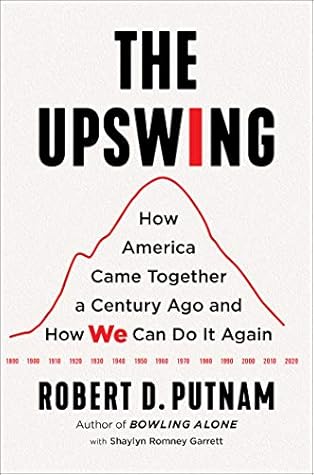More on this book
Community
Kindle Notes & Highlights
Read between
December 16, 2020 - January 30, 2021
Since one popular interpretation of these shifts in policy and of the consequent shifts in income and wealth distribution fingers the Reagan Revolution after 1981 as the chief culprit, it is significant that in virtually every case the key turning points occurred a decade or more before the presidency of Ronald Reagan. In short, the presidential election of 1980 and the subsequent unfolding of Reaganism was a lagging indicator of this sea change in the American political economy.
Unexpectedly, this realignment occurred mostly by Americans adjusting their religious convictions and their views on abortion to fit their increasingly polarized party affiliation, rather than the reverse.53 Partisanship was on its way to becoming the master cleavage in American society and party identity the primary force field.
Eventually, even a technical debate about reading pedagogy between “phonics” and “whole language” approaches became the subject of the party-inflected “Reading Wars.”54
This lag suggests, but doesn’t prove, that polarization has been led by party leaders, with voters gradually sorting themselves to match polarization at the elite level.
American voters increasingly see supporters of the other party as extreme ideologically and flawed personally. Both Democrats and Republicans increasingly dislike, even loathe, their opponents.
“the most significant fault line in the second decade of the twenty-first century [in America] is not race, religion, or economic status but political party affiliation.”
And often voters change their views on issues as a result of these messages from their own party leaders. As leaders “signal” increasingly divergent views on specific issues, that divergence can quickly spread to their followers.97 One recent example: A long-term bipartisan consensus on U.S.-Russian relations was rapidly converted to mass polarization after 2016, as President Trump,
Walter Lippmann in 1914. “There isn’t a human relation, whether of parent and child, husband and wife, worker and employer, that doesn’t move in a strange situation.… We have changed our environment more quickly than we know how to change ourselves.”3
Nationwide membership in service clubs grew exponentially to 300,000 by 1920 and several million by 1930, a quarter century’s rate of diffusion that would not be rivaled until Ray Kroc’s invention of the McDonald’s franchise system nearly half a century later.26
Then, as now, getting married, settling down, and raising children were associated with more regular churchgoing.
At their peak in the 1960s roughly one third of all American adults belonged to a union family, a figure that would fall to 13 percent by 2018.98
Teddy Roosevelt, Jane Addams, and other progressives were explicit in rejecting “individualism,” and endorsing (in Addams’s words) “a cooperative ideal of mutual assistance,” not merely charity or philanthropy, which she and her fellow reformers saw as patronizing forms of aid.
81 As Isabel Wilkerson, a master chronicler of the Great Migration, put it, “the former Confederacy was made better in part by the pressures put upon it by those who made the sacrifice to leave it.”82
women entering higher-paid professions largely rely on lower-class women and women of color to provide domestic labor and childcare—meaning that class inequality has to a large extent underpinned the expansion of gender equality in the workplace.
Making this shift to a rights-based, identity politics agenda clearly contributed to the achievement of watershed change on questions of equality, but also fundamentally altered the nature of women’s influence on policymaking—for better and for worse.
Henry George was a political philosopher who had published his first book, Progress and Poverty, in 1879, to enormous commercial success. During the 1890s, its sales exceeded all other books except the Bible,
Washington Gladden, an early leader in the Social Gospel movement. “The trouble lies deeper, in our primary conceptions. What we have got to have, if we want the true democracy, is a different kind of men and women—men and women to whom duties are more than rights, and service dearer than privilege.”15
As historian Richard Hofstadter has written, “the moral indignation of the age was by no means directed entirely against others; it was in great and critical measure directed inward.
To structure debates within a gridlocked left/right framework precludes the sheer inventiveness that animated our last upswing and generated solutions that appealed to a broad bipartisan swath of Americans.


